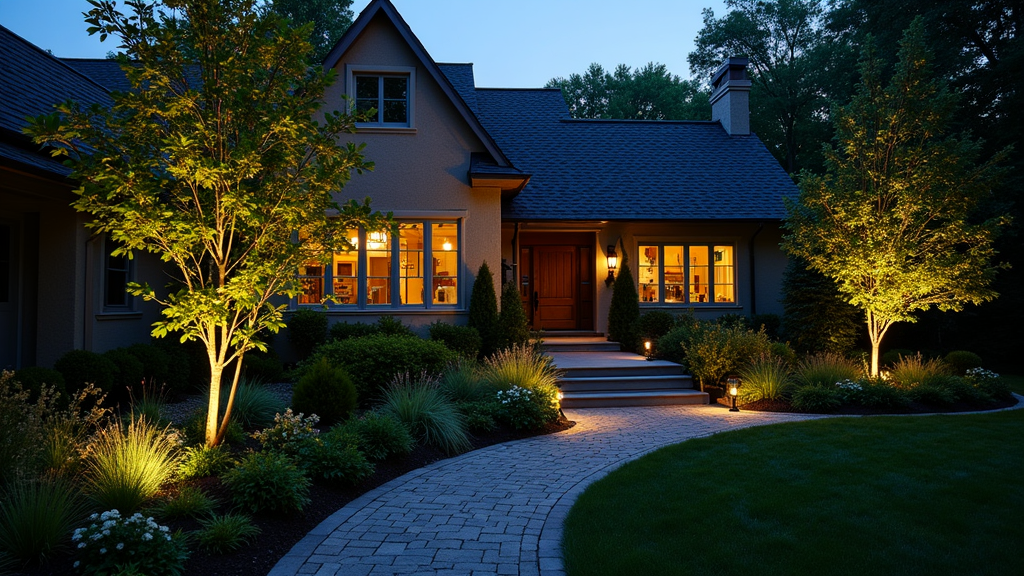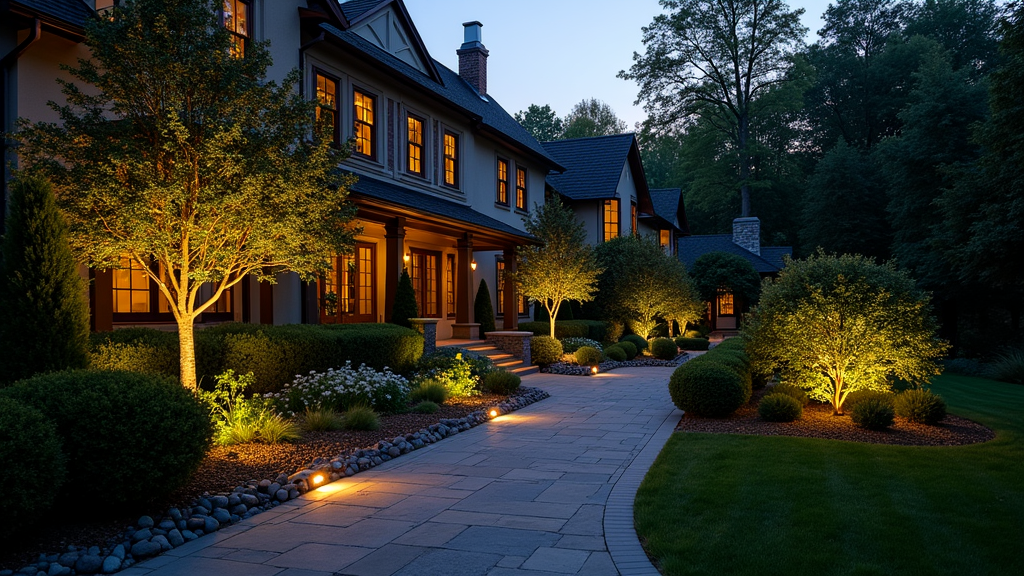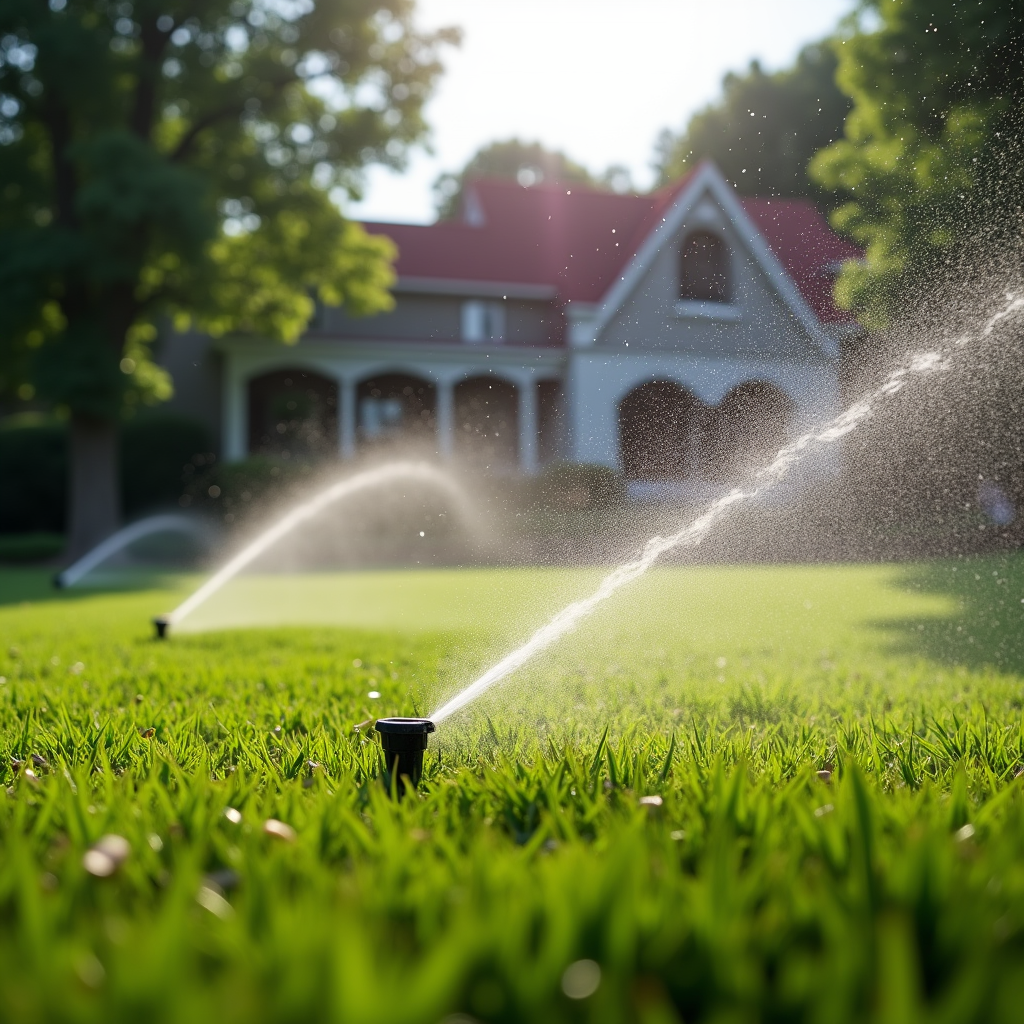Introduction
When we think of landscape design, our minds often wander to manicured lawns, carefully chosen shrubs, and perfectly aligned flower beds. But what if we told you that the most innovative and sustainable designs come not from the hands of humans but from the intricate systems found in nature? Welcome to the world of biomimicry in landscape design, particularly as it applies to the diverse landscapes of North Carolina.
Biomimicry involves learning from nature's time-tested patterns and strategies to solve human challenges. In landscape design, this philosophy can lead us to create spaces that are not only aesthetically pleasing but also ecologically responsible. As we delve into "Inspiration from Nature: Biomimicry in NC Landscape Designs," we'll explore how taking cues from nature can transform our outdoor spaces while promoting sustainability.
Understanding Biomimicry
What is Biomimicry?
Biomimicry is a practice that draws inspiration from biological entities and processes to develop sustainable solutions. It encourages designers, engineers, and architects to look at how nature has adapted over millions of years and apply those lessons to modern challenges. Whether it’s mimicking the structure of a leaf for energy efficiency or designing water management systems inspired by wetlands, biomimicry offers a wealth of knowledge.
The Principles of Biomimicry
Nature as Model: Studying natural forms, processes, and ecosystems. Nature as Measure: Using natural processes as a standard to evaluate human designs. Nature as Mentor: Learning from nature’s wisdom about how life works.Why is Biomimicry Important in Landscape Design?
Incorporating biomimetic principles into landscape design encourages resilience against climate change, promotes biodiversity, conserves resources, and enhances aesthetic appeal. In North Carolina's varied ecosystems—from mountains to coastal plains—biomimicry can help create sustainable landscapes that mimic local flora and fauna.
Landscape Design North Carolina: The Natural Canvas
Diverse Ecosystems in North Carolina
North Carolina is home to an array of ecosystems that range from Appalachian forests to coastal marshes. Each ecosystem has its unique characteristics and biodiversity:
- Mountains: Rich forested areas with diverse plant life. Piedmont: Rolling hills with a mix of hardwood forests. Coastal Plains: Wetlands teeming with wildlife.
These environments provide a perfect backdrop for incorporating biomimetic principles into landscape design.

Key Characteristics of NC Landscapes
- Biodiversity: Home to various plant species like dogwoods, azaleas, and pines. Climate Variability: Ranging from humid subtropical in the east to temperate in the west. Water Resources: Numerous rivers, lakes, and streams providing vital habitats.
By understanding these characteristics, designers can formulate plans that resonate with local ecosystems while enhancing beauty.
Inspiration from Nature: Designing Resilient Landscapes
Water Management Inspired by Nature
One crucial aspect of landscape design is managing water effectively. Natural systems have evolved efficient ways to handle water flow:

- Wetlands: Act as natural sponges absorbing excess rainwater. Forest Canopies: Slow down rainfall allowing water infiltration rather than runoff.
Incorporating these principles into landscape design can lead to gardens that manage stormwater efficiently while reducing erosion and flooding risks.
Implementing Rain Gardens
Rain gardens are wonderful examples of biomimetic techniques used in landscaping. They mimic natural wetlands by capturing rainwater runoff:
Site Selection: Identify areas where water collects naturally. Plant Selection: Use native plants that thrive in wet conditions. Soil Preparation: Ensure soil allows for good drainage and filtration.By implementing rain gardens across North Carolina properties, homeowners can contribute positively towards stormwater management while enhancing their outdoor aesthetics.
Promoting Biodiversity through Native Plantings
Another way biomimicry influences landscape design is through the promotion of biodiversity via native plantings:
Native Plants vs Non-Native Plants- Native plants are adapted to local soil types and climates. They require less maintenance and support local wildlife like pollinators.
By designing landscapes with native species such as wildflowers or grasses indigenous to North Carolina’s regions, we foster healthier ecosystems that support various forms of life—from bees to birds—ensuring ecological balance.
Sustainable Practices in Landscape Design
Reducing Resource Consumption through Biomimetic Techniques
Sustainability is at the core of modern landscape design; hence employing biomimetic practices helps minimize resource consumption:
Xeriscaping: Adapting landscaping techniques that reduce reliance on irrigation by using drought-resistant plants. Composting Systems: Mimicking natural decomposition cycles within garden settings provides organic matter back into the soil without chemical fertilizers.Implementing these practices leads not only towards environmentally friendly designs but also cost-effective maintenance strategies for homeowners across North Carolina.
Energy Efficiency Through Natural Structures
Designers often look toward nature for insights on maximizing energy efficiency in landscapes:
- Green Roofs & Walls: Inspired by forest floors covered with vegetation which insulate buildings naturally against heat loss or gain.
Incorporating green structures into urban areas leads both towards energy savings while creating vibrant green spaces within concrete jungles—a significant advantage for cities like Charlotte or Raleigh!
Case Studies in NC Landscape Designs Using Biomimicry
The Blue Ridge Parkway Project
The Blue Ridge Parkway project showcases how developers applied biomimetic principles when crafting scenic overlooks blending seamlessly into mountainous terrain:
Utilized native stone formations mirroring existing geological structures. Dispersed plantings reflecting natural growth patterns minimizing environmental disruption during construction phases.This project highlights how embracing biomimetic strategies creates harmonious landscapes respecting both human desires for aesthetics yet honoring nature’s intricate artistry!
Coastal Resilience Projects
In response to rising sea levels threatening coastal communities like Wilmington or Outer Banks regions—biomimetically designed shorelines utilize mangrove-like root systems stabilizing sandy beaches against erosion while nurturing marine habitats below sea level!
These projects prove invaluable as they reflect proactive measures toward ecological resilience amid changing climate realities faced along coastlines today!
FAQs about Biomimicry in Landscape Design
1. What exactly is biomimicry?
Biomimicry refers to learning from nature's designs and processes to solve human problems sustainably—drawing inspiration directly from biological entities observed over millennia!
2. How does biomimicry apply specifically within landscaping contexts?
Within landscaping contexts—it allows us understanding how trees manage water flow naturally leading us towards efficient irrigation methods; or using plant diversity seen across ecosystems ensuring robust ecological networks thriving harmoniously together!
3. Are there financial benefits associated with implementing these designs?
Absolutely! Sustainable http://martinutsv076.fotosdefrases.com/bright-ideas-for-illuminating-your-backyard-oasis practices reduce long-term maintenance costs significantly alongside decreasing utility bills through energy-efficient designs leading property owners saving money over time!
4. Can I incorporate these concepts into my existing garden?
Certainly! You can begin small by adding native plants suited for your area while implementing rain gardens designed around existing features enhancing overall functionality—every step counts toward improving our environment collectively!
5. Are there professional services available specializing in this type of design?
Yes! Many landscape designers specialize specifically within this niche focusing on sustainability combined with aesthetics utilizing principles derived directly from observing nature itself!
6. How does one begin researching potential local experts knowledgeable about these approaches?
Start searching online directories listing certified professional landscapers focusing on eco-friendly approaches! Also consider visiting botanical gardens showcasing regional flora aiding your journey discovering more options available locally!
Conclusion
As we've explored throughout this article titled “Inspiration from Nature: Biomimicry in NC Landscape Designs,” it becomes increasingly clear that embracing nature-inspired strategies offers promising avenues toward creating beautiful yet functional outdoor spaces across North Carolina! By integrating biomimetics within our landscaping efforts—not only do we enhance visual appeal but also promote ecological health ensuring future generations inherit thriving environments full rich biodiversity fostering harmony between humanity & mother earth herself 🌎✨
